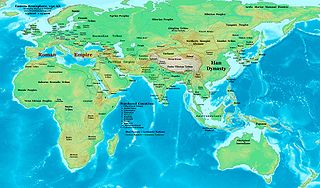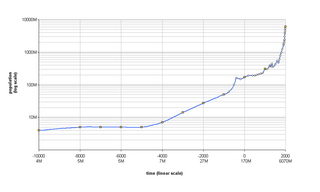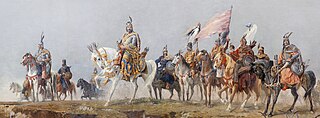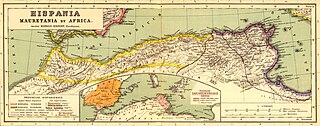
The 1st century was the century AD 1 to AD 100 according to the Julian calendar. It is often written as the 1st century AD or 1st century CE to distinguish it from the 1st century BC which preceded it. The 1st century is considered part of the Classical era, epoch, or historical period.
The following outline is provided as an overview of and topical guide to the history of South Asia:

Ancient history as a term refers to the aggregate of past events from the beginning of writing and recorded human history and extending as far as the post-classical history. The phrase may be used either to refer to the period of time or the academic discipline.

Goguryeo, also called Goryeo, was a Korean kingdom located in the northern and central parts of the Korean Peninsula and the southern and central parts of Manchuria. At its peak of power, Goguryeo controlled most of the Korean peninsula, large parts of Manchuria and parts of the Russian Far East and eastern Mongolia.

Saka, Śaka, Shaka or Saca(Persian: oldSakā,mod. ساکا; Sanskrit: शक, Śaka; Ancient Greek: Σάκαι, Sákai; Latin: Sacae; Chinese: 塞, old *Sək, mod. Sāi) were a group of nomadic Iranian peoples who historically inhabited the northern and eastern Eurasian Steppe and the Tarim Basin.

A dynasty is a sequence of rulers from the same family, usually in the context of a feudal or monarchical system, but sometimes also appearing in elective republics. Alternative terms for "dynasty" may include "house", "family" and "clan", among others. The longest-surviving dynasty in the world is the Imperial House of Japan, otherwise known as the Yamato dynasty, whose reign is traditionally dated to 660 BC.

The Three Kingdoms of Korea refers to the three kingdoms of Baekje, Silla and Goguryeo. Goguryeo was later known as Goryeo, from which the modern name Korea is derived. The Three Kingdoms period is defined as being from 57 BC to 668 AD.

The Kushan Empire was a syncretic empire, formed by the Yuezhi, in the Bactrian territories in the early 1st century. It spread to encompass much of Afghanistan, and then the northern parts of the Indian subcontinent at least as far as Saketa and Sarnath near Varanasi (Benares), where inscriptions have been found dating to the era of the Kushan Emperor Kanishka the Great. Emperor Kanishka was a great patron of Buddhism. He played an important role in the establishment of Buddhism in the Indian subcontinent and its spread to Central Asia and China.

The history of the world, in common parlance, is the history of humanity, as determined from archaeology, anthropology, genetics, linguistics, and other disciplines; and, for periods since the invention of writing, from recorded history and from secondary sources and studies.
The Dongyi or Eastern Yi was a collective term for ancient peoples found in Chinese records. The definition of Dongyi varied across the ages, but in most cases referred to inhabitants of eastern and northeastern China, the Korean peninsula, or Japan. They were one of the Four Barbarians in Chinese culture, along with the Northern Di, the Southern Man, and the Western Rong; as such, the name "Yí" 夷 was something of a catch-all and was applied to different groups over time.
This timeline of ancient history lists historical events of the documented ancient past from the beginning of recorded history until the Early Middle Ages.
This page is based on this
Wikipedia article Text is available under the
CC BY-SA 4.0 license; additional terms may apply.
Images, videos and audio are available under their respective licenses.






















